Visitor–Centered Exhibits: 4 Key Concepts
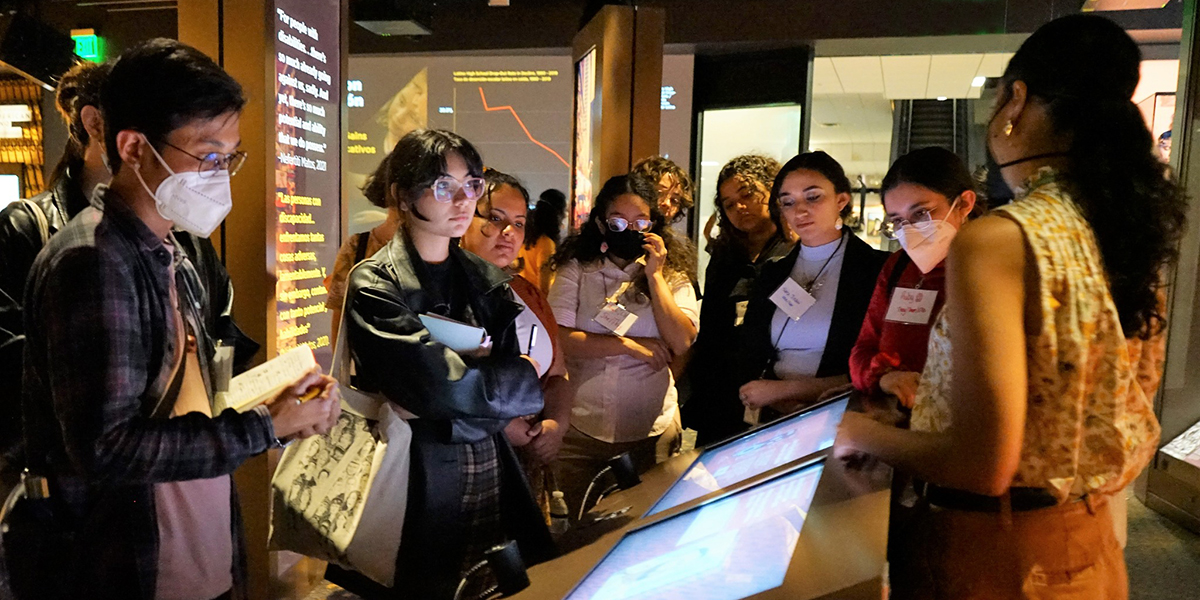
The term “visitor-centered” has recently become a hot point of discussion in museum publications, blogs and conferences. Educators have taken the lead in the debate, with marketing and outreach professionals quickly following suit. Two books on this topic have published this April: Visitor-Centered Exhibitions and Edu-Curation in Art Museums by Pat Villeneuve and Creating the Visitor-Centered Museum by Peter Samis. I would argue that the triggers for this new attention to the audience’s experience were studies such as “A Decade of Arts Engagement: Findings From the Survey of Public Participation in the Arts, 2002–2012” that showed a reduction in museum attendance. That report, and others like it, struck fear in the museum world and pushed museum professionals to rethink their position toward the visitors they were losing. Other studies such as “Demographic Transformation and the Future of Museums” demonstrated that cultural make up of audiences was changing and traditional museum programming was missing the mark. It suddenly became imperative to study the visitor.
What came as a shock to the museum world–that attention must be paid to visitors (customers)—is something that private industry has always known. Yet, the institutional resistance to simply appealing to popular taste sprung from an understandable fear of dumbing down museum programming. To most museum professionals popular entertainment and museum exhibitions are polar opposites. Resolving that dissonance demands a creative approach to understanding the scholarly goals of the museum while appreciating the visitor’s experience of an exhibit.
We believe that the core of this new approach is the manner in which content is delivered. Exhibit design serves as the mediator of content, presenting it in a form that visitors can value regardless of their level of prior knowledge. With the goal of encouraging more visitor-centered museums, exhibit designers have reevaluated their discipline, developing many new ways of reaching audiences. Below we outline a few of the most important ideas.
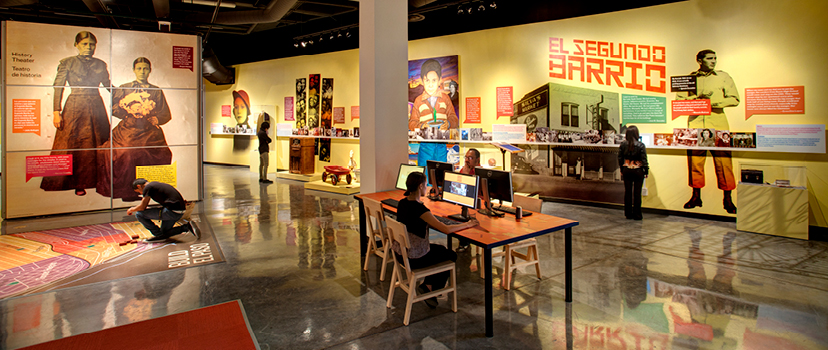
This gallery in El Paso Museum of History offers visitors a variety of activities to choose from.
CHOICE
Museum educators like John H. Falk* have advocated for developing programs in which visitors can choose their own path of interpretation. This positions the visitor at center of the learning experience—or at least as coequal to the educator and curators. The core of this design approach is allowing museum visitors to choose where to place their attention, with the goal of giving them greater agency in their appreciation of content. According to Falk this is desirable because it allows the visitor to act upon his or her own interests and curiosity. The exhibit experience is meeting them on their terms, which is the best condition for a meaningful interaction. The exhibit experience evolves and grows in interest because it is guided by the visitors’ personal inquiry and curiosity. Instead of designers and curators determining the path visitors follow, visitors gravitate toward options they like and that choice-making is an inextricable part of the experience.
In this approach, the exhibit design must supply a variety of means to deliver content or take-away messages. Choices must be made available. But unlike a store that offers choices to satisfy whims of taste, the exhibit design must follow styles of learning. There are various models that can be applied. Paths can correlate to the well-known seven learning styles: visual, aural, logical, verbal, physical, solitary and social. There is also the IPOP* model developed by the Smithsonian, which “identifies four key dimensions of experience – Ideas (conceptual, abstract thinking), People (emotional connections), Objects (visual language and aesthetics) and Physical experiences (somatic sensations).” These are choices in treatment and not in content. The visitor will move toward the treatment that best fits his or her learning style. It may not be possible to integrate treatments that match every learning style, but the goal is to offer multiple ways of experiencing an exhibit, and of delivering a message. Regardless, the curatorial content remains the core of the experience, and determines what options will be available.
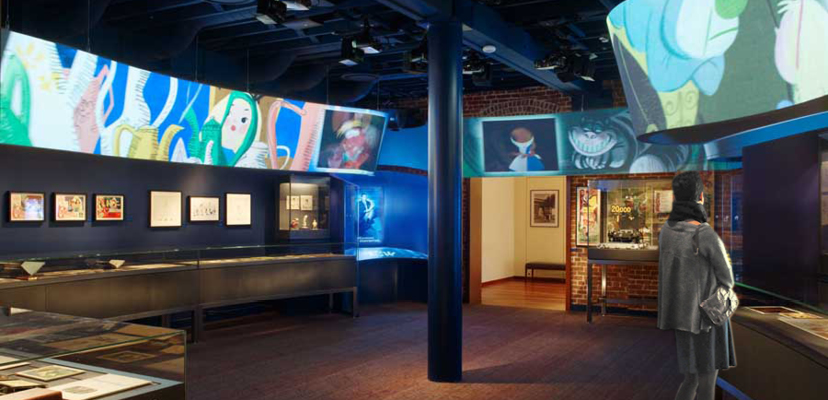
The undulating projection screen, or “Film Strip” (as we called it), is the Big Idea for the Motion Picture Gallery at the Disney Family Museum.
THE BIG IDEA
Many museum educators and curators have found success using a Big Idea to guide the exhibit development process. (A Big Idea is a broad-brush idea in visual, experiential, literal or abstract form that expresses the curator’s overarching theme.) Recently during the 2017 MANY (Museum Association of New York) conference, Ian Kerrigan**** spoke about searching for a Big Idea for an exhibit on first responders to the events of 9/11. It was important to him that this idea could be conveyed in one sentence—or even one word. As the exhibit development team sifted through the archive, the Big Idea appeared almost by itself. The word “Hope” stood out as the key story line and emotion in the archive, and it was the world that captured the team’s attention. The virtue of this Big Idea is that it was simple and broad enough for all visitors to grasp. It left many opportunities for the visitor to enter the story, regardless of her or his age or educational background.
At Museum Environments (ME), some of our most successful exhibit designs have been structured around a Big Idea. We believe that when a visitor walks into a gallery he or she must grasp the general effect of the exhibit at once. In fact we often present a physical or graphic manifestation of the Big Idea close to the entrance. That manifestation is most effective when it is large enough to create impact and build an immersive environment, yet simple enough to quickly communicate the essential points of the content.
How the Big Idea is communicated differs widely between exhibits: the manner of expression should be tailored to the museum’s mission/brand and the exhibit’s content and intended audience .
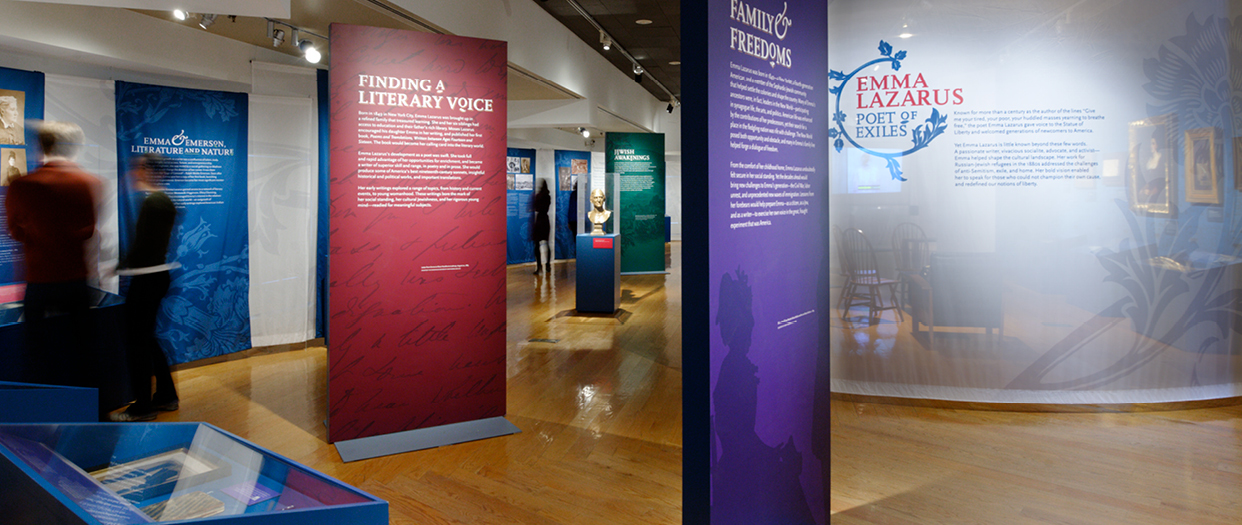
A clear graphic system prepares the visitor to easily find relevant information and guide them in their experience.
FAST AND FRUGAL NAVIGATION
After the overall structure of the exhibit is determined, the designer can turn to facilitating the visitor’s process of choice-making. We seek display methods that we describe as “fast and frugal”: visitors can observe several points of interest at first glance and quickly decide which one to focus on. For us, time is an integral factor in a design’s effectiveness. We assess displays based on how quickly visitors can decide how they would like to engage them. Of course, sometimes a more in-depth engagement is demanded from the visitor—these are often the most rewarding experiences for the curious visitor.
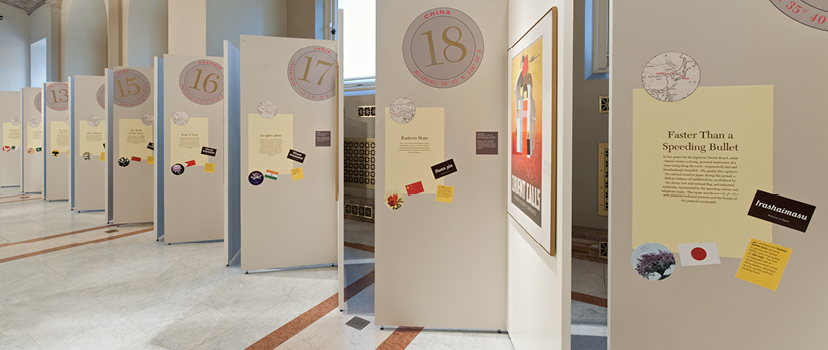
Different label formats provide information to different types of visitors. Kids as well as graphic design enthusiast have information to enjoy.
PULL-CONTENT
An artifact can be seen from multiple perspectives. We can focus on its formal beauty, or on its historical context (that is, they can be observed synchronically or diachronically, respectively, just to mention two schemes among many possibilities). The exhibit design can articulate both perspectives by layering different treatments. A clearly articulated graphic system can direct visitors to different messages within the same content. In that way, they can “pull out” the information they are interested in—or make the choice engage with all of it. By offering multiple perspectives, we create an array of appealing content choices–which is known as “Pull-Content” in pedagogical circles. Pull-Content is “a term educators use to designate information that learners actively seek or retrieve based on self interest.” **** This technique has proven effective for educators and at ME we have found it works well in exhibit design. It allows visitors’ aptitude and curiosity to guide them through the exhibit.
These are just a few approaches to designing successful visitor-centered exhibits. Every new exhibit offers opportunities to think of new approaches. We hope however that we have shed light on how the way an exhibit is designed can create a visitor-centered experience. Exhibits are a form of communication between the visitor and the museum. Only when design is undertaken with a fundamental understanding of that communication can we can truly claim to be visitor centered.
By Mariano Desmaras, Creative Director
* Dr. John H. Falk is Director of the Institute for Learning Innovation and Sea Grant Professor of Free-Choice Learning at Oregon State University. He is a leading expert on free-choice learning; the learning that occurs when people have significant choice and control over the what, where and when of their learning. Link: https://en.wikipedia.org/wiki/John_H._Falk
**Seven learning styles https://www.learning-styles-online.com/overview/
*** IPOP dimensions of experience developed Office of Policy and Analysis at the Smithsonian https://www.si.edu/Content/opanda/docs/IPOP/IPOP%20short%20description%20150806.pdf
****Ian Kerrigan is Assistant Director of Exhibition Development at the National September 11 Memorial and Museum.
****The Participatory Museum, By Nina Simon Published by Museum 2.0
Category: Mission
Copyright © 2024 · All Rights Reserved · Museum Environments
· Log in
